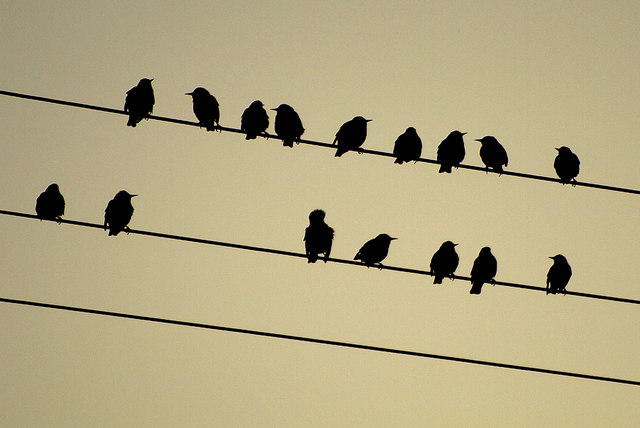Data show that up to 65 million birds in the U.S. are killed by flying into powerlines, or perching on them and being electrocuted, each year. Worldwide, the mortality might be as high as 175 million birds. Some areas are installing powerlines with insulators so the birds do not make contact with power and putting devices near lines and towers to warn birds of obstructions to their flight. Unfortunately, dead birds under powerlines may have died instead from an additional hazard, guns.

According to a recent article in the journal iScience, illegal shooting is a leading cause of death along powerlines in the western U.S. Here is an excerpt from the summary of that study: “We found 410 dead birds collected along 196 km of power lines in four western USA states (Idaho, Oregon, Utah, and Wyoming) during 2019–2022. We necropsied these carcasses to test conventional wisdom suggesting that electrocution is the leading cause of death of birds at electrical infrastructure. Of 175 birds with a known cause of death, 66% died from gunshot. Both raptors and corvids were more likely to die from gunshot than from other causes.”
Dead birds found along powerlines are assumed to have flown into one of the lines or were electrocuted when they perched. Previously no one thought to x-ray the bodies. These researchers did and found shotgun pellets or bullet fragments in 66 percent of the birds. At two sites, 100% of the birds found were shot, at another site 39%. The dead birds were mostly raptors and corvids, raptors being hawks, eagles, falcons, and owls and corvids the crows and ravens.
Utility companies are responsible for bird deaths from their infrastructure and many companies have spent considerable amounts of money trying to make their facilities safer for birds. But now we find that half of the birds found dead under that infrastructure have been shot, so it becomes a more complex problem as preventing illegal kills is challenging.
When I was about 25 years old, I was urged by a couple of avid hunters, colleagues of mine, to join them. I spent a year hunting deer, ducks, rabbits, and doves. Aside from the fact that I didn’t like killing animals (although I only caused the demise of like two ducks and a dove all year), I really didn’t like the behavior of some of the hunters I ran across. I saw many protected birds shot, including a Great-horned Owl, Red-tailed Hawk, dozens of Red-winged Blackbirds, and lots of miscellaneous sparrows. And the taking more than the legal limit of doves. Just because these guys wanted something to shoot. I didn’t want to be affiliated with these kinds of people, so I sold my shotgun and haven’t hunted or handled a gun since.
I’m certainly not condemning all hunters or shooters. My best friend (now passed but my thoughts are always with him) was an avid hunter but would never think of shooting anything illegal, out of season, or over the limit. He respected the law and was an avid environmentalist.
So what is to be done? There are Hunter Safety/Education Courses for almost all states. I don’t know what the effectiveness of these programs are but I’m sure many could be strengthened. And as we witness the precipitous decline in bird populations, we also need to put more resources into enforcement.
In order to counter this type of behavior, I believe we need to educate at the elementry level, before they get their hands on guns as adults. Teaching kids beforehand “may” place them on a better path in their futures.
Thanks for the informative article! Took me by surprise as I’m sure it did forost of your readers.
I once heard a bad noise in the air and a noise down the street. As we ran towards it, turned out a duck hit a telephone or electrical wire, then hit the pavent. We kept it in a quiet box overnight as it had blood running out it’s nose, then released it to a local lake the next morning. It flew very well over the water, so we felt it was okay.